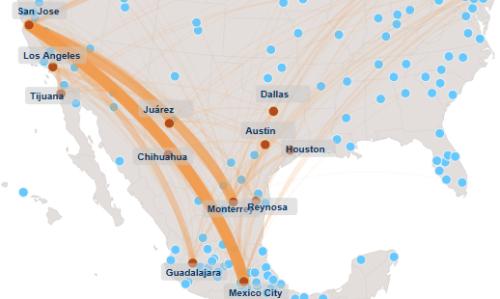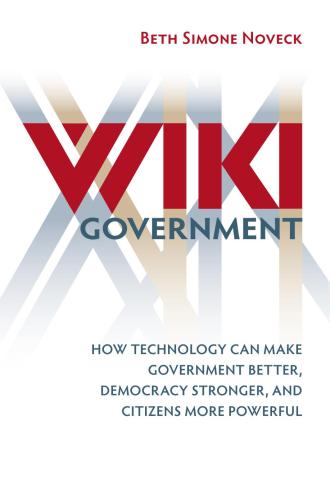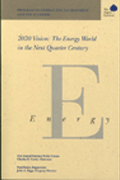The Global Cities Initiative’s second annual global forum concluded Thursday with a new vision of how, working together, cities and metro areas can power the growth of the North American economy.
Mexican Minister of the Economy Ildefonso Guajardo Villareal provided the context and the challenge. Twenty years of NAFTA have greatly expanded the volume and the quality of trade within North America. What the United States trades with Mexico and Canada now matches what it trades with Japan, Korea, and the BRICS nations combined. And yet over that 20-year period, North America’s share of world exports has fallen from 19 percent to 13 percent. Recovering North America’s momentum in world export markets will be critical for growing jobs and incomes continent-wide.
For all the lack of progress in Washington on key issues including trade, Mexico is moving forward aggressively on a package of reforms that could pave the way for increased trade and competitiveness. As Kimberly-Clark Mexico Chairman Claudio Gonzalez outlined, the “Pact for Mexico,” a unique multi-party bloc led by President Peña Nieto, has passed significant education, labor market, telecommunications, and fiscal reforms. Energy and electoral reforms are on the near-term horizon as well. And Louise Goeser from Siemens Mesoamerica outlined a bold vision for the next 20 years of North American free trade, from increased integration in service industries, to boosting trade in value-added terms, and expanding free trade with Asia and Europe.
Getting the macro conditions and policies right is critical, but not sufficient, said Mesa, AZ mayor and U.S. Conference of Mayors President Scott Smith. He emphasized that cities understand their economies best, and city leaders are the ones who need to adapt when economic circumstances change (as they inevitably will).
In his presentation (and in our Metro North America report), Bruce Katz outlined a three-part playbook for how sub-national leaders are acting to further trade, investment, and economic growth in our three countries:
Set a vision. City and metropolitan leaders are setting bold visions for the future of their economies that can focus public, private, and civic sector actors on shared goals for growth. Mayor Smith outlined his city’s new mantra: Educate, Innovate, Facilitate, Elevate. His economic development agenda is focused around strengthening Mesa’s assets in healthcare, education, aerospace, and tourism (HEAT), and working together with partners in the Maricopa Association of Governments and the Greater Phoenix Economic Council to create and execute a metropolitan business plan . Taking greater advantage of the region’s already strong ties with cities and states in Mexico is an important part of those visions.
Invest in what matters. The factors that drive city and regional growth are innovation, human capital, and infrastructure. The quality of those assets, regardless of the sector in which they are applied, account for long-run economic success. Windsor, Ontario Mayor Eddie Francis described how the downturn in the auto industry in the late 2000s threatened tens of thousands of workers in his city, a major North American auto hub just across the border from Detroit. Recognizing this, the city and region invested in helping auto suppliers transition into the aerospace industry, taking advantage of workers with widely applicable manufacturing skills and excess plant capacity to diversify the economy towards a sector with growing opportunities. Working with the University of Windsor to develop a new aerospace engineering program, the region has succeeded in attracting thousands of new aircraft maintenance, repair, and operations (MRO) jobs. Even the university’s automotive research program AUTO21 has become a key partner in bolstering the region’s emerging aerospace cluster.
Network globally. The capstone of the GCI-Mexico forum was the signing of a new agreement by mayors Miguel Ángel Mancera of Mexico City and Rahm Emanuel of Chicago to partner together on strategies to grow the economies of both cities. While “sister cities” agreements have existed for some time—and Chicago alone has 28 of them, focused mainly on cultural exchange—the new agreement aims to take the cities’ already-strong relationship in an explicitly economic direction, exploring joint opportunities for foreign direct investment, export promotion, and increased tourism. As Mayor Emanuel described during a discussion with Mayor Mancera moderated by JPMorgan Chase Executive Vice President Peter Scher, Chicago is acting boldly because the city cannot be held hostage to the functioning (or dysfunction) of its state and national governments. And Mayor Mancera noted that even given the progress being achieved today at the national level in Mexico, mayors are ultimately co-responsible for generating local and regional growth and prosperity.
Juan Pardinas, director-general of Brookings’ forum partner IMCO, began the day’s proceedings by noting that the turbulent and sometimes-abstract world of national politics should not obscure that cities remain places of optimism, places that can work together and learn from one another to do better on behalf of their citizens. Linking in purposeful new ways with partner cities to grow investment, jobs, and prosperity represents a hopeful new strategy not only for deepening North American economic integration, but also realizing the promise of a network of trading cities worldwide.









Commentary
A New Vision for North America’s Cities
November 15, 2013